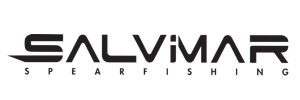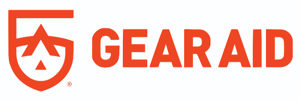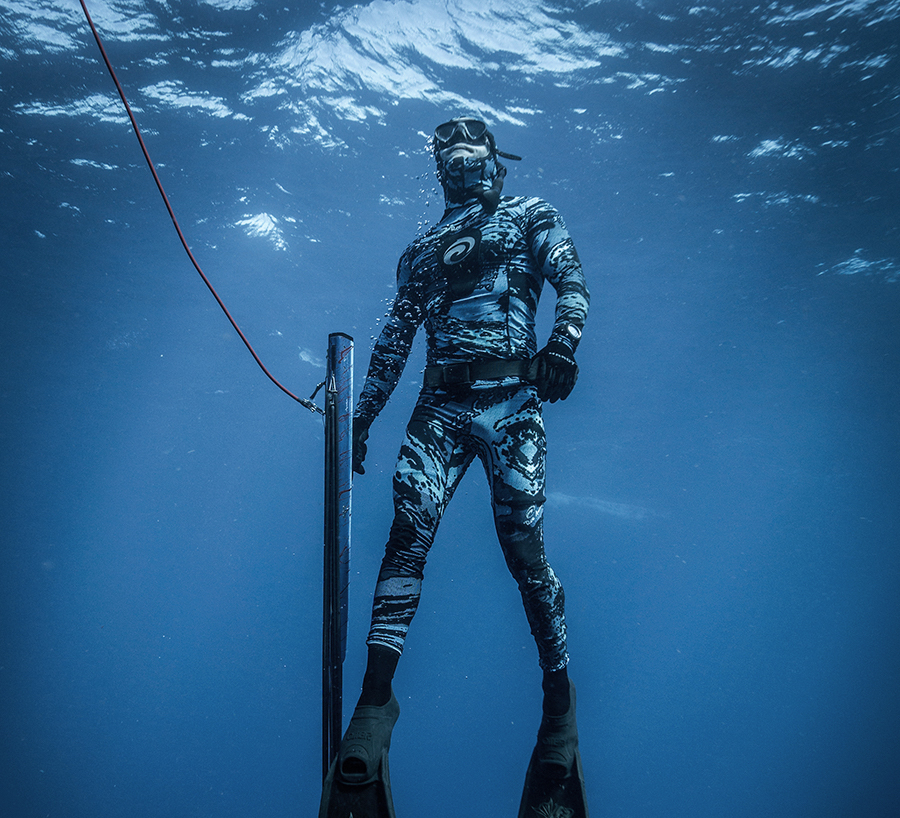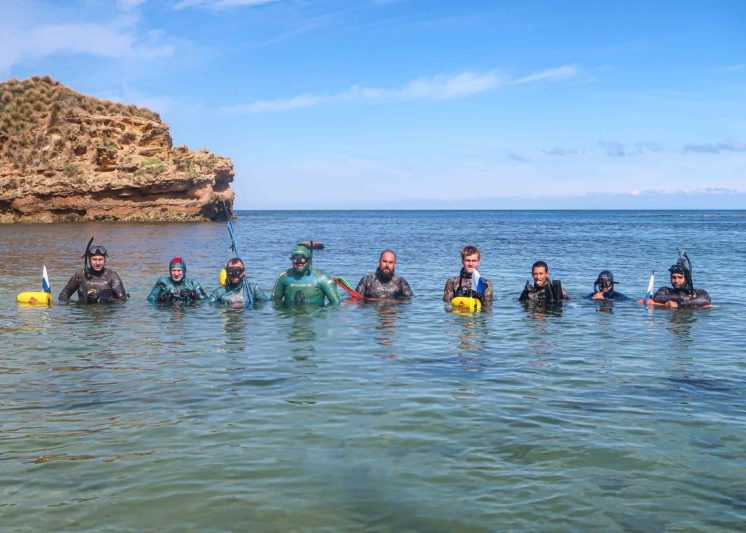There are few activities that are as exhilarating as spearfishing, as the sport intertwines ability, physical effort, the wilderness, and a little bit of luck. And we, as enthusiasts, want to share that passion with others. Our mission at Spearfishing Australia has been to create a space where knowledge, support, and value are second to none. To promote these values, we regularly host spearfishing educationals around Australia.
Most recently, we hosted a two-day spearfishing educational on the Mornington Peninsula for key Spearfishing Australia retail partners. During these two days, we have promoted and engaged in safe diving practices, fundamental equipment knowledge, gun rigging techniques, sustainable spearfishing guidelines, and practical first-hand experience. Practically any problem in spearfishing can be solved through either the proper education or equipment and our retail partners are in contact with thousands of spearos every day. By offering this experience to our retail partner network we could maximise our reach across the nation. We hope to see more and more of our retail partners offer similar experiences to scale not only the growth of the sport but also enhance the experience for existing spearos.
If you are looking to grow your knowledge of the sport, we encourage you to reach out to our retail partner network, as many are already running similar experiences. Some are even offering advanced courses, access to different environments and types of spearfishing, and even multi-day trips interstate and abroad.
Day 1 Morning- Classroom
Principles, guidelines, and foundational knowledge are never a bad place to start when teaching anything, and spearfishing is no different. For the first several hours, we covered safe practices and why they’re effective. We also went over equipment differences, including wetsuits, fins, masks, spearguns, and more. We then “learned by doing”, through the rigging of guns, creation of rubbers, and modifications made to “out-of-the-box” guns.
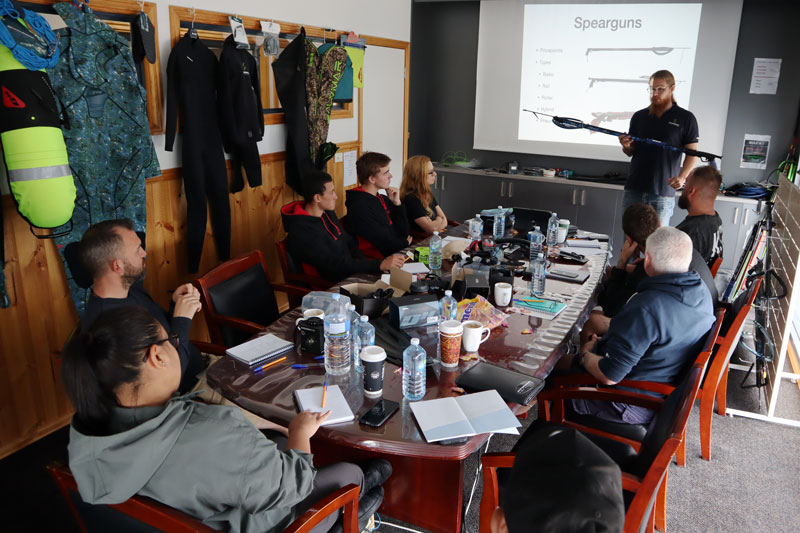
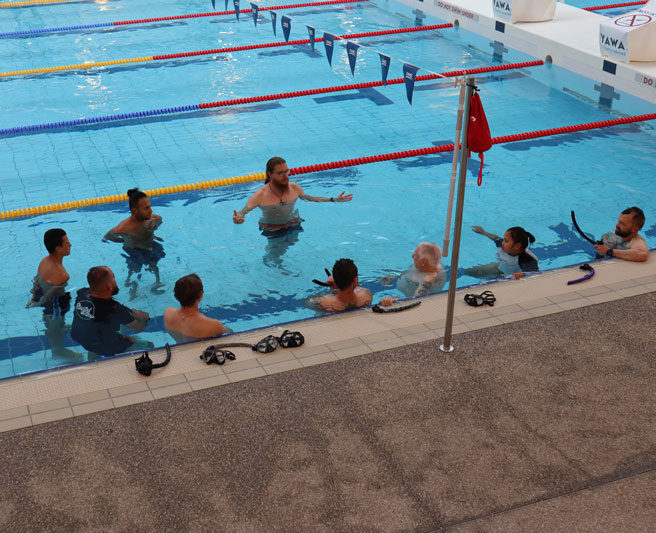
Day 1 Afternoon- Pool
Bjorn Nielsen, Spearfishing Australia’s regional representative for Queensland, conducted the educational over the two days. He is an Apnea Australia instructor, and a former freediving competitor. The time in the pool was used initially to practice breathing techniques, safe practices when freediving, and buddy behaviour principles. As many of our partners are scuba centres, there was some “unlearning” which needed to be done, since many of the rules are completely opposite (such as not exhaling on ascent).
Participants were also able to get a better understanding and familiarisation of their freediving/spearfishing gear. Using longer fins, low-volume masks, and “non-purge” snorkels acted differently than what many were accustomed to. The different finning techniques and breath-holds could be better grasped before going to the ocean.
Day 2 Diamond Bay
After a quick gear check, the group did a final weather check, monitoring swell, wind speed, and tidal conditions to decide on the best dive spot. The destination was Mornington Peninsula’s Diamond Bay, located on the peninsula’s “back beaches”, where the land meets Bass Strait. Diamond Bay offered a protected area to go through more safety basics, with a shallower bottom and minimal surge.
There are massive stretches outside of the small protected bay, with rocky areas and ledges covered in many species of macroalgae, creating a fantastic for fish that call Australia’s Great Southern Reef home. To the left is the area called the Bay of Islands, and to the right is the coastline that runs south to Jubilee Point. Participants not only experienced the environment itself, but also saw many iconic species, like Port Jackson sharks, Wobbegongs, and smooth stingrays. Everyone had a shoot, with most participants having a decent catch for a few hours in the water. Their haul was impressive for a day when many were shooting for the first time.
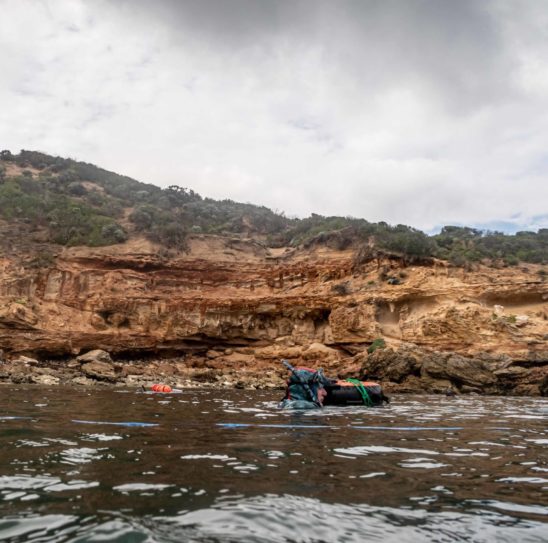
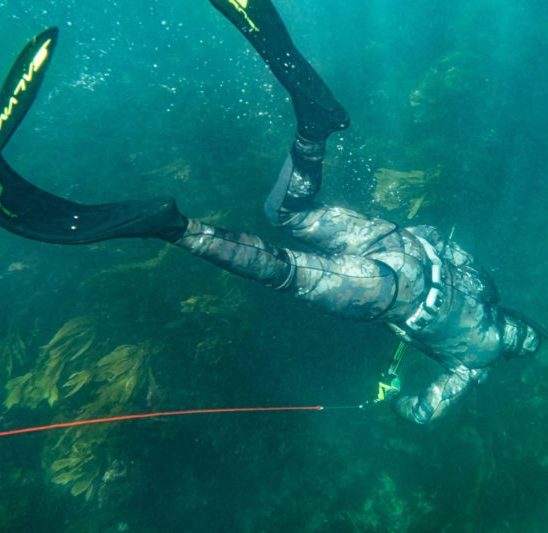
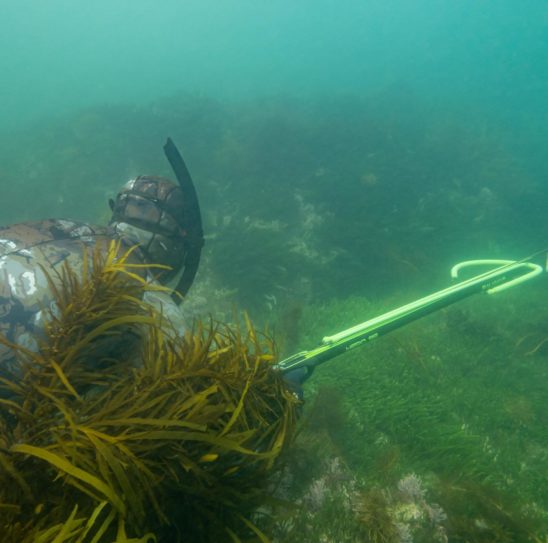
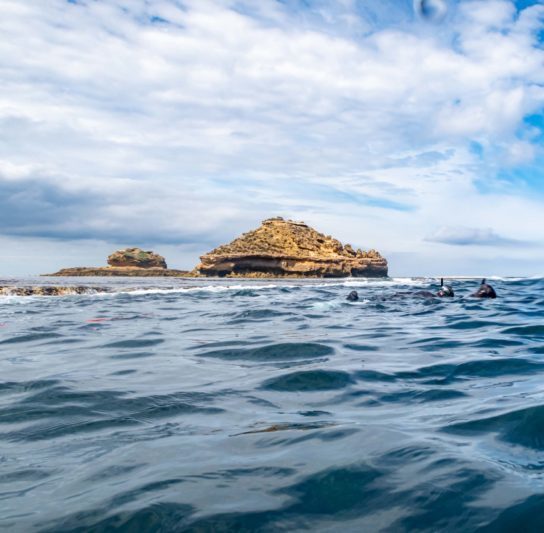
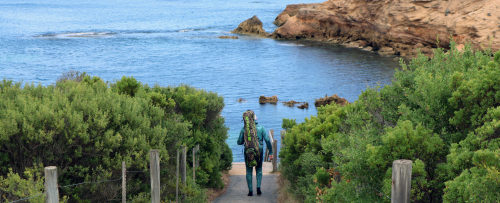
Day 2 Close
After going through some gear maintenance and how to properly look after equipment post-dive, we said farewell, with new friendships formed, and new dive buddies connected. More importantly, more “ocean ambassadors” have been created, which can help connect more people to the sea through exposure, sustainability and appreciation.


